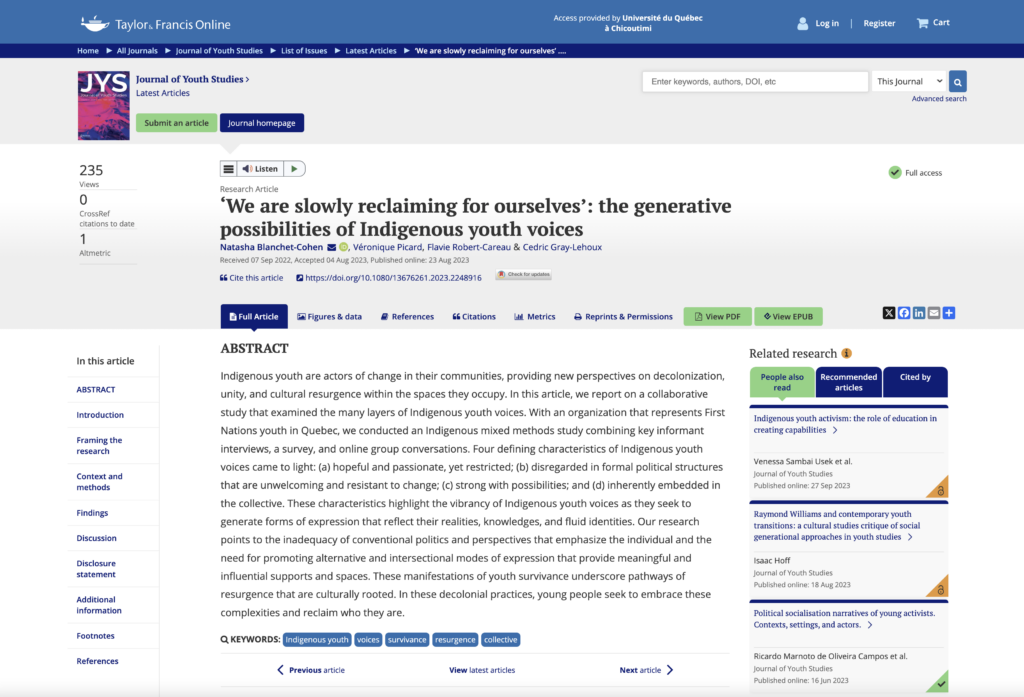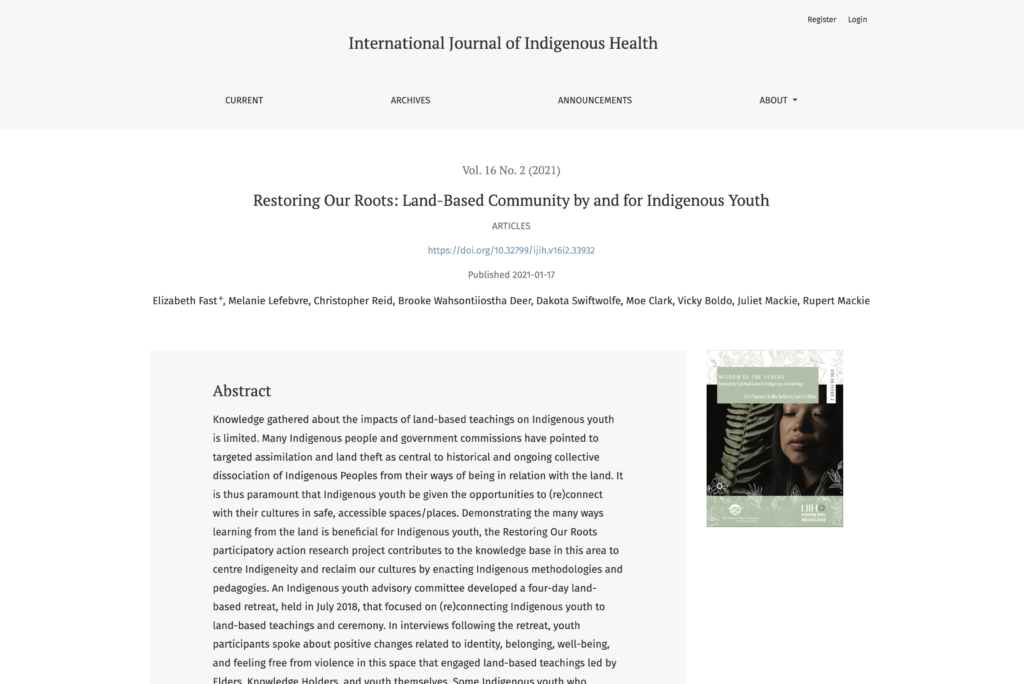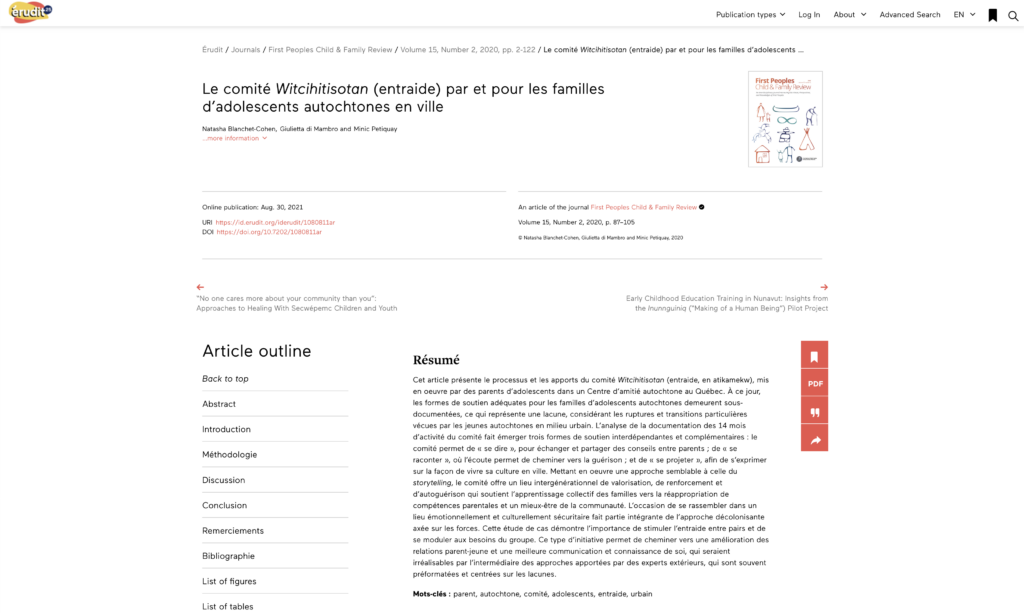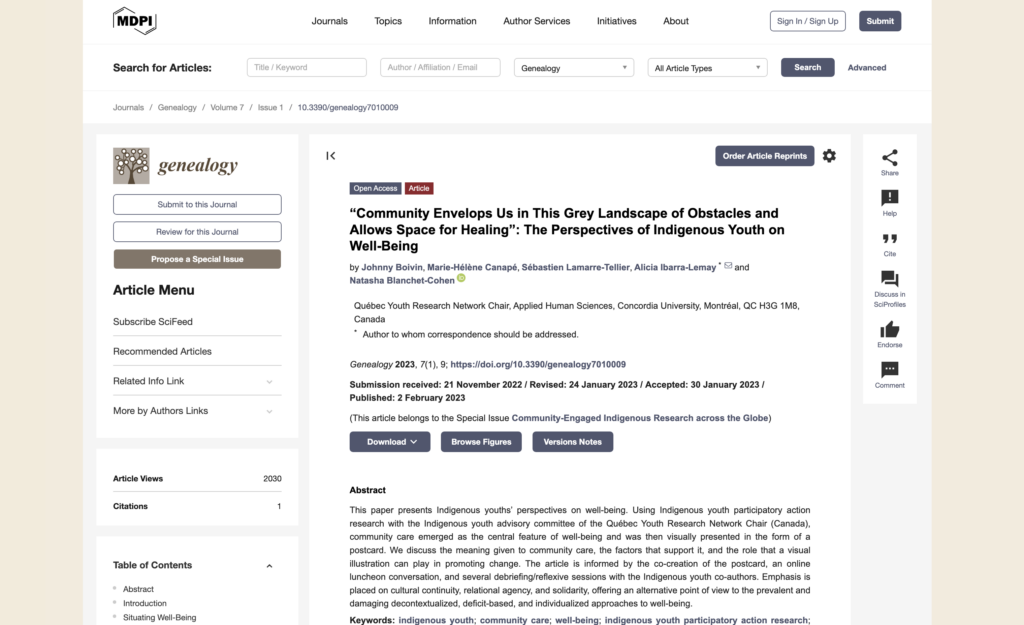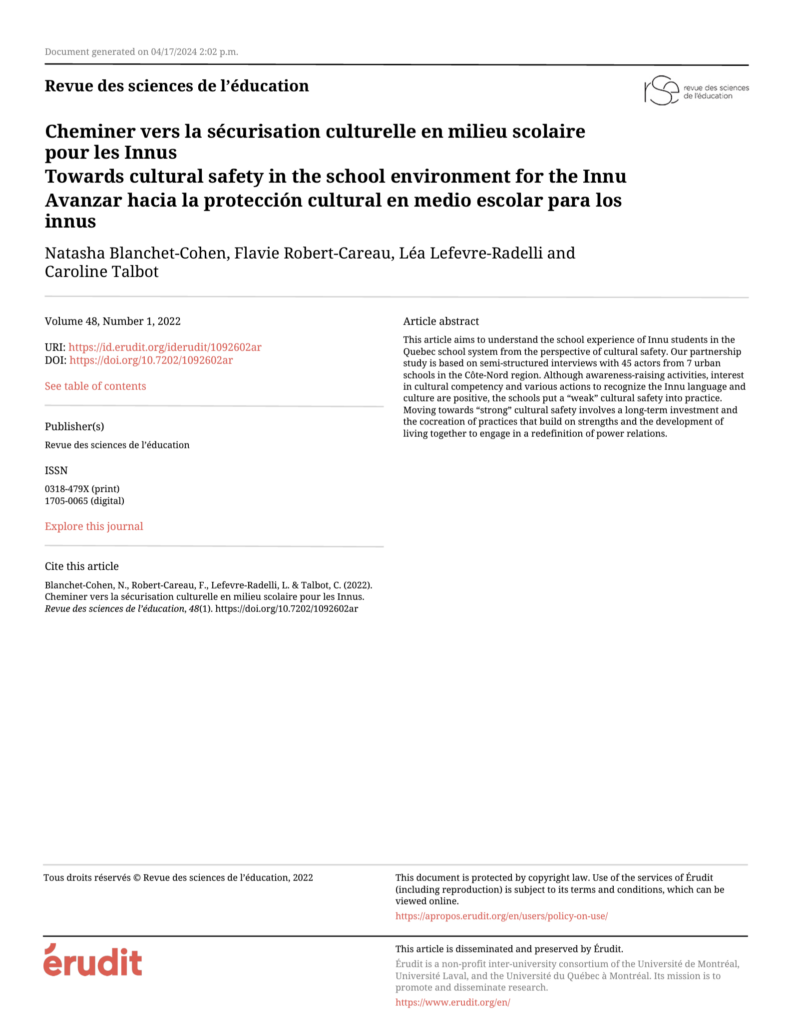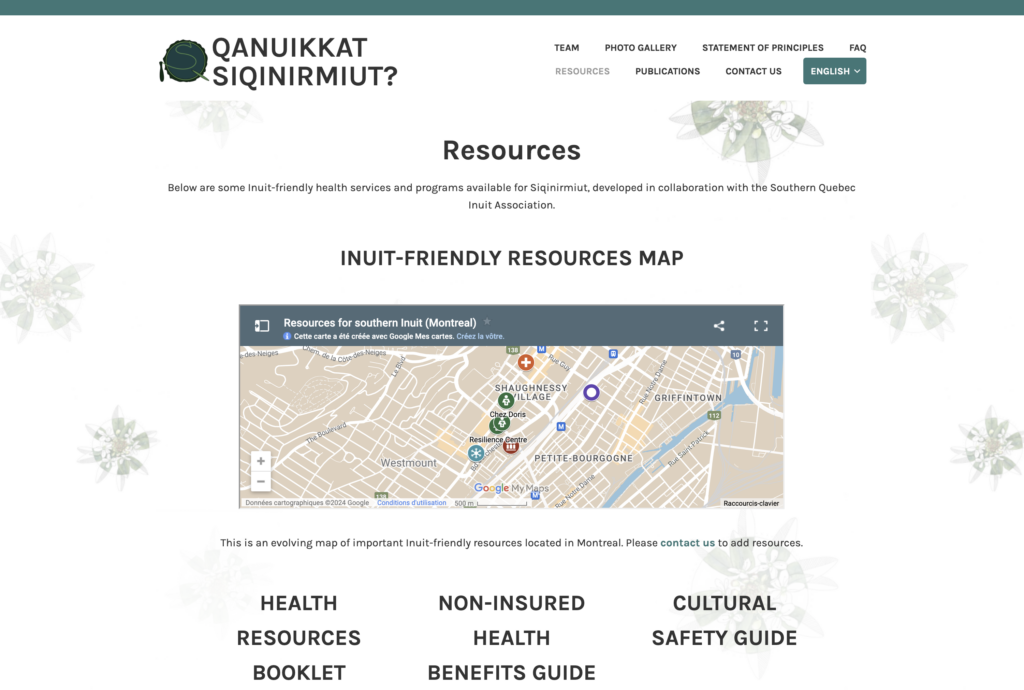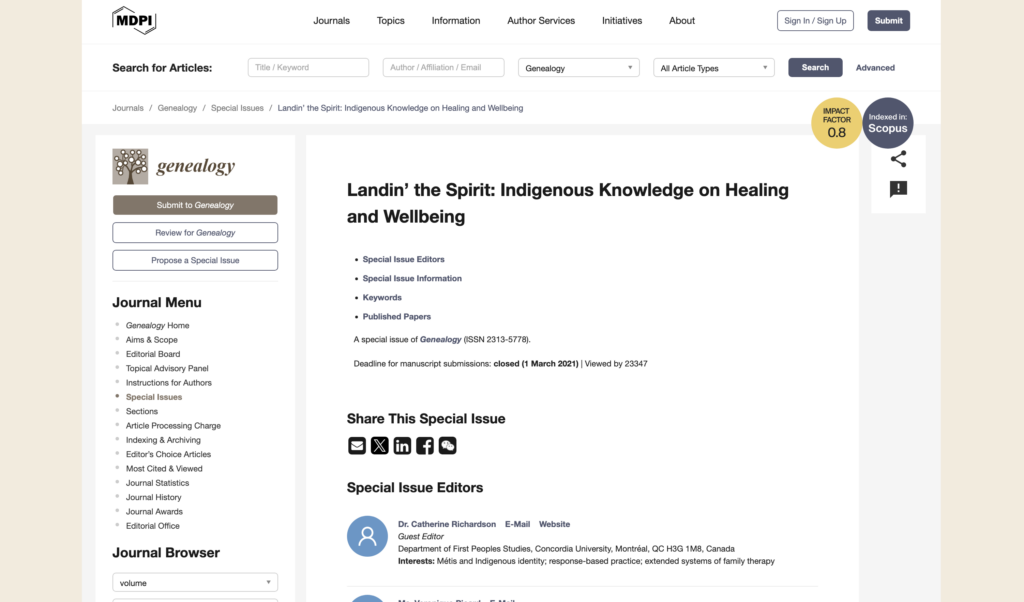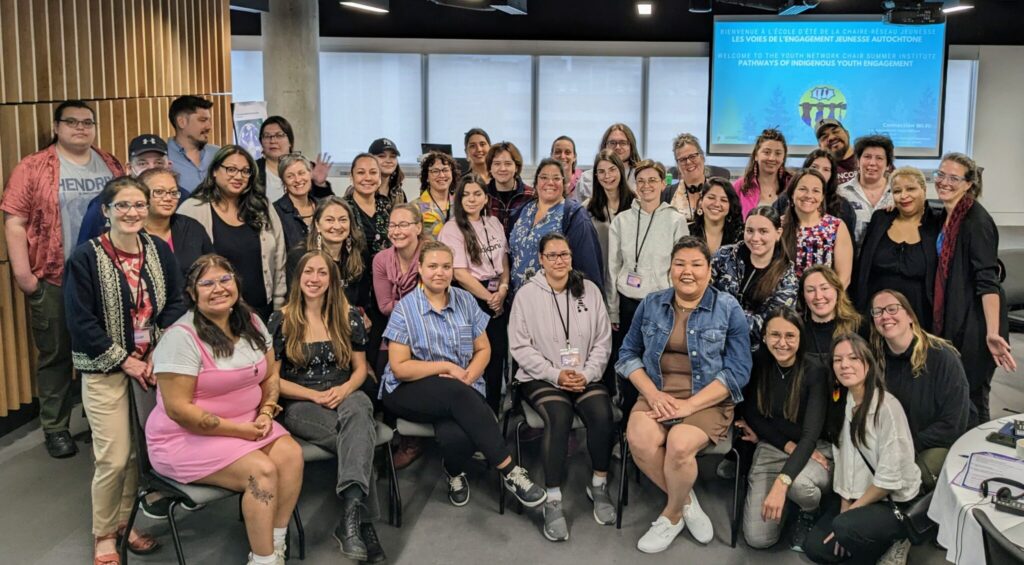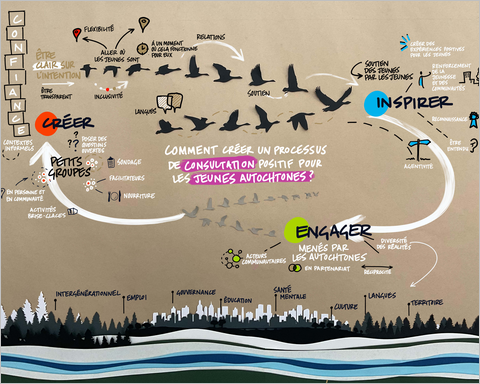Notice bibliographique
Beaudoin, J.-M., Bouthillier, L., Bulkan, J., Nelson, H., Trosper, R. et Wyatt, S. (2016). What does “First Nation deep roots in the forests” mean? Identification of principles and objectives for promoting forest-based development. Canadian Journal of Forest Research, 46(4), 508-519.
Résumé
We often hear about the resistance of First Nation (FN) communities to the industrial model of forestry, but we hearless about what they wish to achieve. Translating FN perspectives into concepts that are understood by the mainstream societycan help inform current and future forest policies. Such translation can support initiatives that seek ways to increase FNparticipation in the forest sector. This paper documents one process of translation. It identifies the principles and objectives forforest-based development of the Essipit Innu First Nation in Quebec, Canada, reflective of the deep roots that anchor the Essipitto their territory. Based on participatory research carried out between January and July 2013, we identify 34 objectives foldedinto three core FN principles: Nutshimiu–Aitun (identity–territoriality), Mishkutunam (sharing–exchange), and Pakassitishun(responsibility–autonomy). Our analysis shows that the economic aims of the dominant forestry model are too narrow for FNcommunities. This paper contributes to expanding FN engagement in forestry through management and economic approachesthat are better adapted to their culture and values.
On entend souvent parler de l’opposition des communautés autochtones envers le modèle industriel de foresterie, mais pas beaucoup de ce qu’elles souhaitent accomplir. La transposition des perspectives autochtones dans des concepts plus facilement compréhensibles des non autochtones peut contribuer à améliorer les politiques forestières actuelles et futures. Ce travail de transposition entend également soutenir les initiatives visant à stimuler la participation des Autochtones au secteur forestier. Cet article documente un tel processus de transposition. Il identifie les principes et les objectifs qui guident le projet de développement forestier d’Essipit, une communauté autochtone innue du Québec (Canada). Il révèle le lien profond entre les membres de cette communauté et leur territoire. À partir d’une recherche-action menée entre janvier et juillet 2013, nous identifions 34 objectifs qui se rattachent à trois principes fondamentaux : le Nutshimiu–Aitun (identité–territorialité), le Mishkutunam (partage–échange) et le Pakassitishun (responsabilité–autonomie). Notre analyse montre que les objectifs économiques de la foresterie conventionnelle sont trop étroits dans un contexte autochtone. Elle apporte une contribution à l’engagement croissant des communautés autochtones en foresterie en suggérant des modèles économiques et des approches de gestion mieux adaptés à leur culture et à leurs valeurs. [Traduit par la Rédaction]
Hyperlien
https://doi.org/10.1139/cjfr-2015-0170Publication du membre
Jean-Michel BeaudoinAppartenance aux volets













